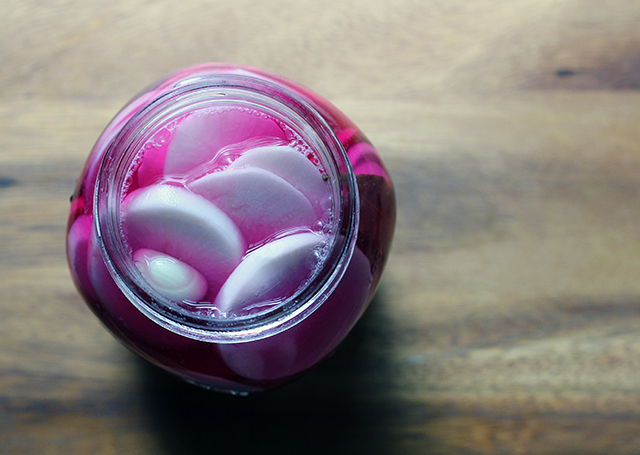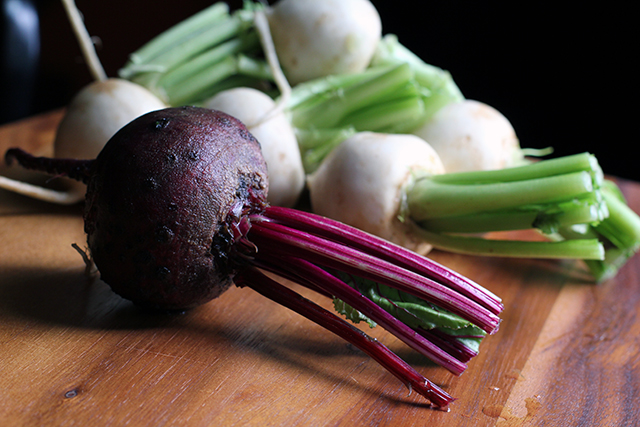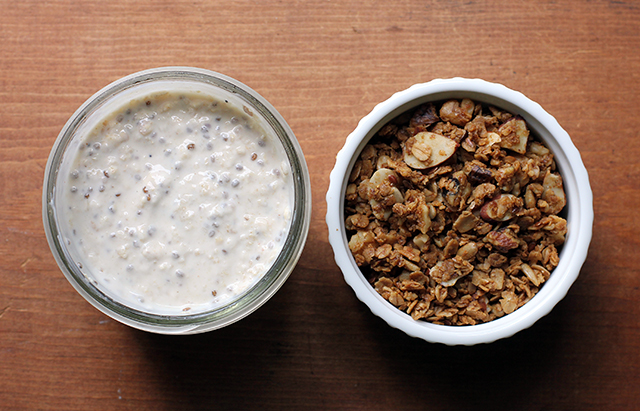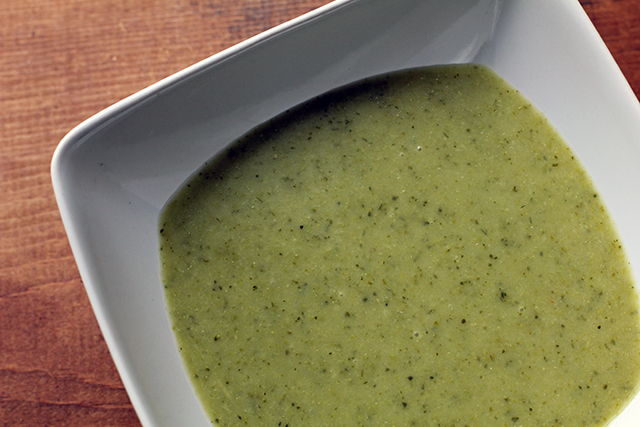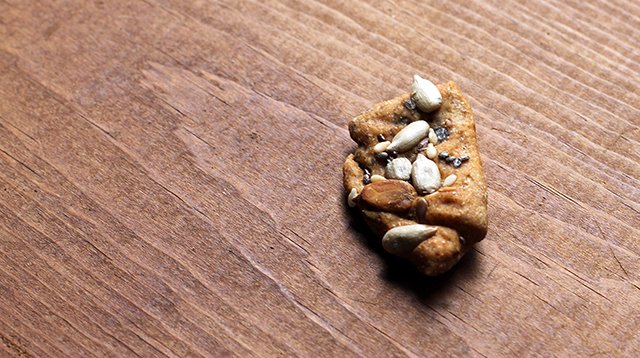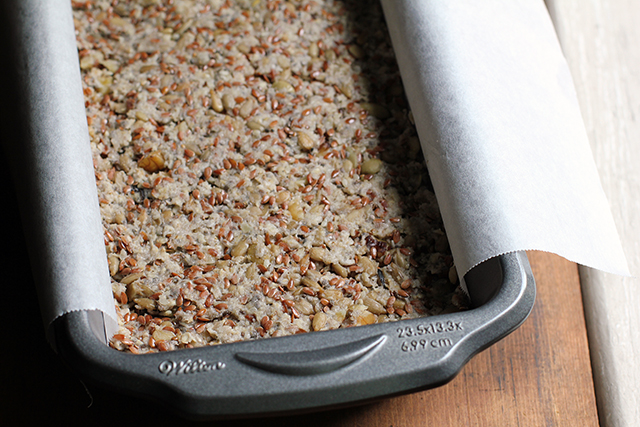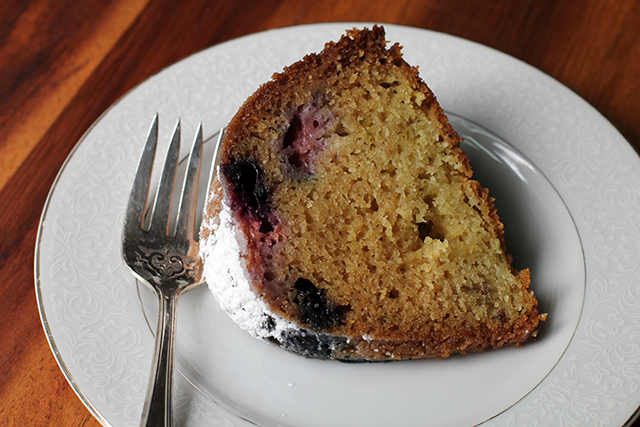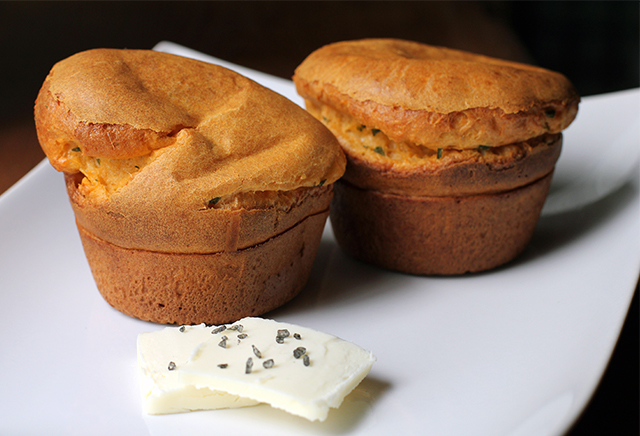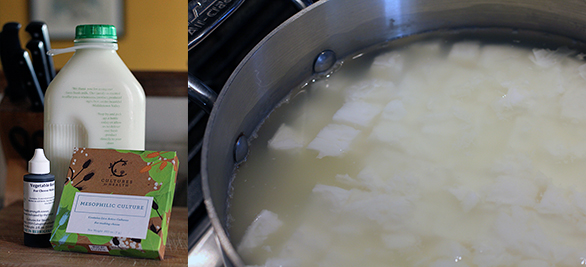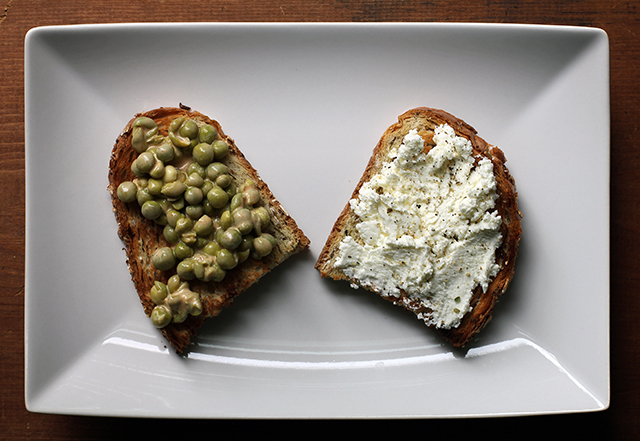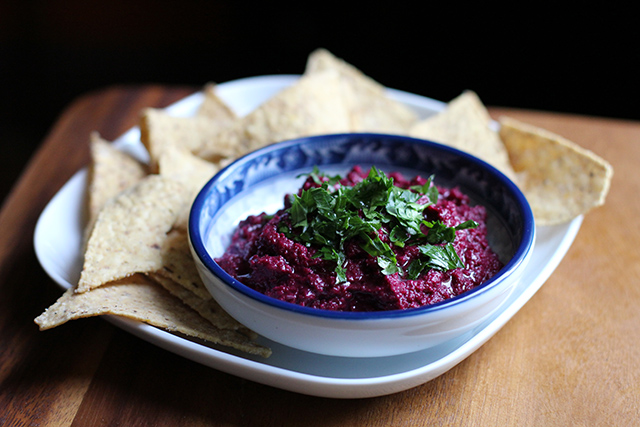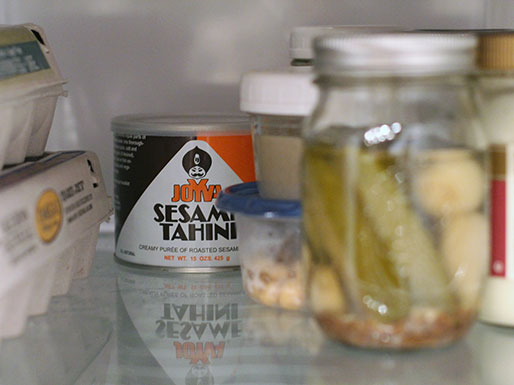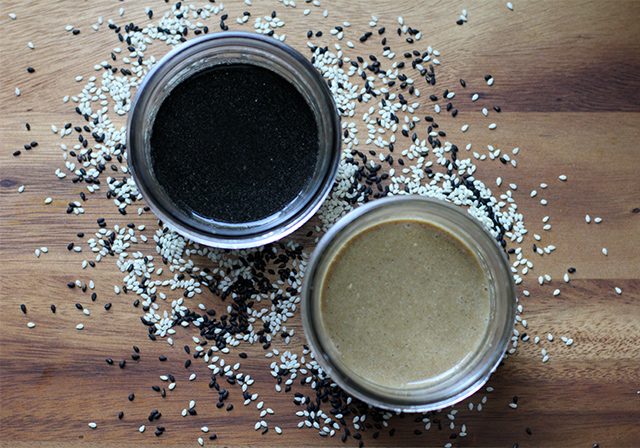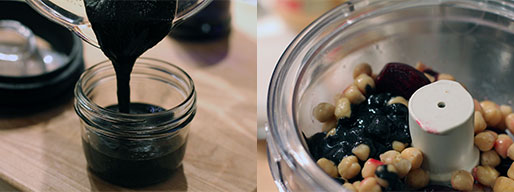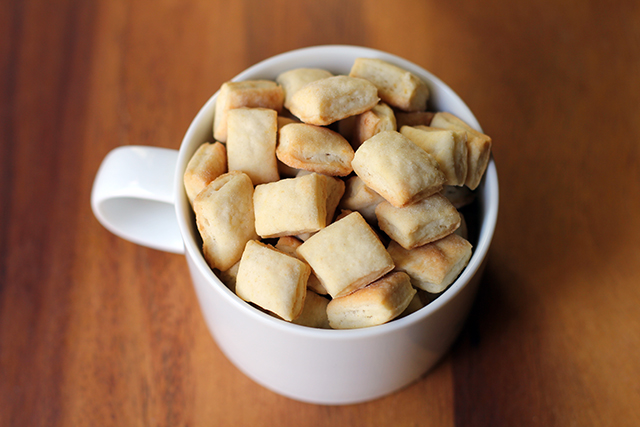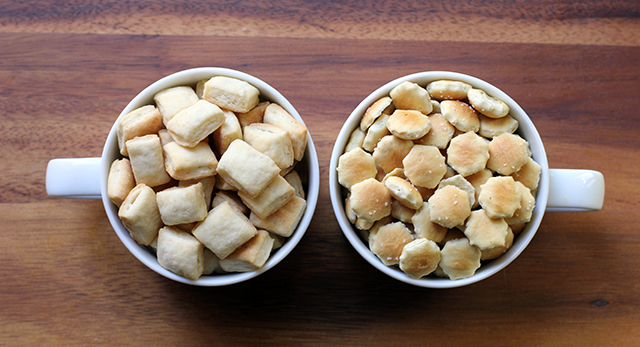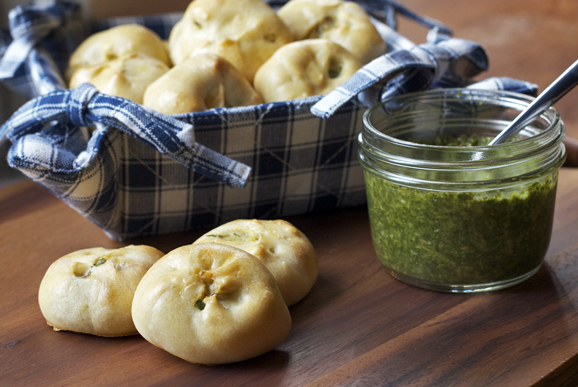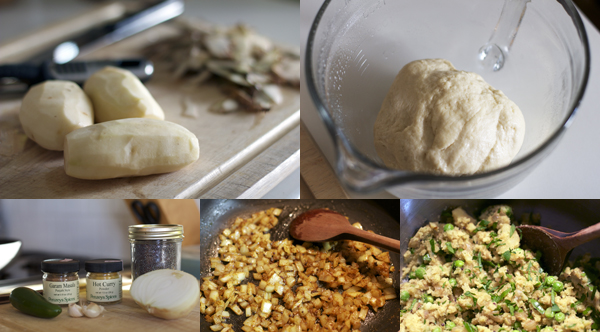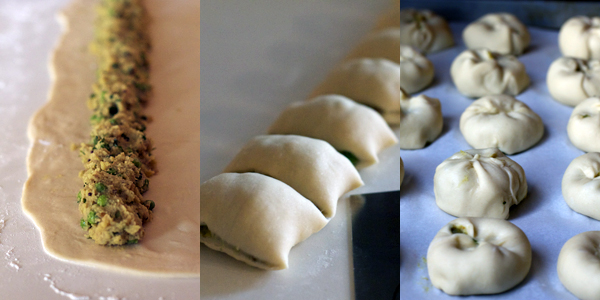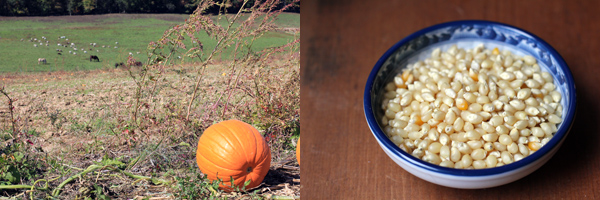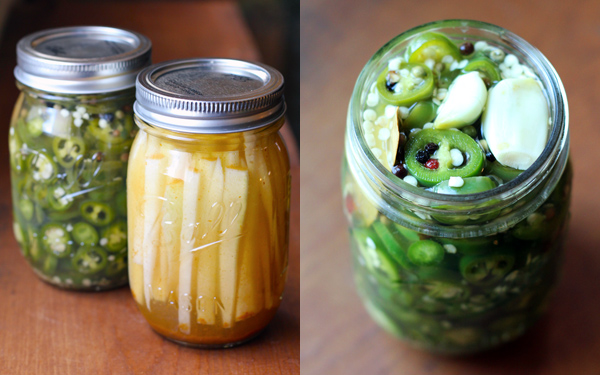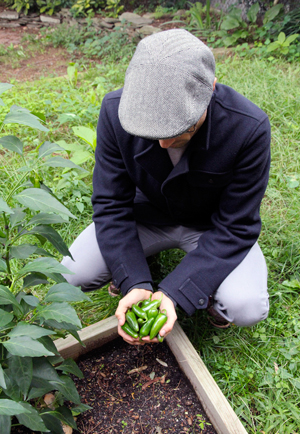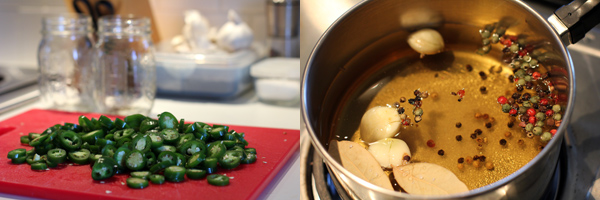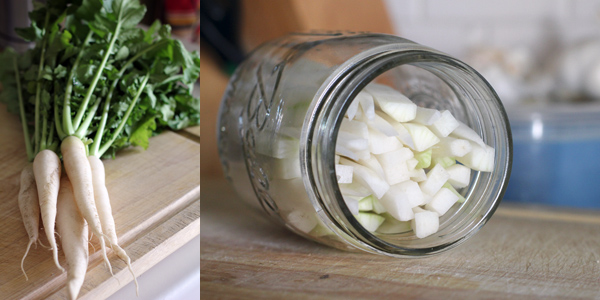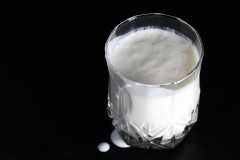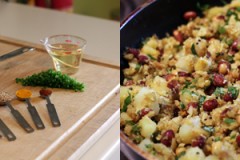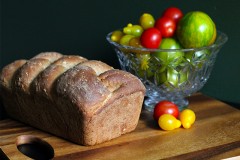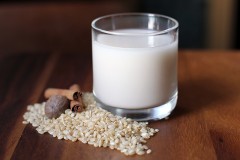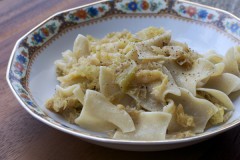So, things have been going in Wonderland Kitchen, they just haven’t been going “OMG, I totally have to tell you about this ah-maze-ing cookie recipe I just invented” great. That, or they’ve been going “this other person’s recipe is awesome and I posted about it last year” (so repeat as needed).
I’ve also been doing a good bit of cooking for real people beyond my husband (or unintentionally for my cat, when my back is turned, the little sneak!). It seemed rude to stick a lens in a guest’s face during an 8 a.m. breakfast, but in hindsight I’m feeling less shy, so beware future visitors!
Anyway, this being Sunday, I thought perhaps a little confession time was in order–air the laundry and wipe off the counters for the week ahead–and so in no particular order, some recipe takeaways for when the CSA first slams back into the rotation and houseguests make last minute visits. What have you been cooking as we slide into summer?
A Reminder that You Can Pickle For Tomorrow What You Can’t Consume Today
Since the crisper drawer was already bursting with greens, I picked up a couple bunches of these white turnips and pickled them according to David Lebovitz’s recipe. Here I thought I was innovating, but hardly! I did however get distracted and ended up with an overly salted and garlic-y finished product. Will have to try this one again, because the beet slices resulted in an amazing brine. And I do have a soft spot for pink food.
A Reminder to Prep Guest Breakfasts Ahead of Time
I’ve posted about this Little Blue Hen granola before, which I like especially because it includes an abundance of nuts and seeds with nary a spec of dried fruit in sight (though I’ll cop to offering the guests a handful of DIY raisins at their discretion, because come on). I also like to make little cups of refrigerator oats before heading to bed (I substitute kefir for the milk and yogurt) and then just pass out the jars and spoons in the a.m. Haven’t had an unfinished portion yet.
A Reminder to be Brave with Your Summer Soups
I have been having a lot of luck lately with those “use up five things from the in-house stock” on the fly dinners, and this has been especially helpful now that there’s a lot more produce around. As we crawl towards the end of the week and another pick-up looms, sometimes the stuff just needs to be used up. That’s how I ended up with asparagus, broccoli, and spring onions in a soup pot, simmered with just enough veggie broth to cover, and then pureed with the last of the dill and the remaining 1/4 cup of cream in the bottle. A light spring soup, tasty both hot and cold.
A Reminder to Double the Doctor Kracker Knock-Offs
Fair warning that these are very crisp crackers, but they are just like the ones that come eight to a box in the grocery. If your family is as addicted to them as mine, you have come to the right place for the knock-off recipe. But be sure to hide a few for your own eating: this was the lone piece of cracker left in the bag when I went back to take a picture and have a snack.
A Reminder to Not Burn Your Hand When Baking Life-Changing Bread
This is the pre-baked look of My New Roots’ much-discussed Life-Changing Bread. The first loaf I made with really beautiful Bob’s Red Mill oats and specially purchased hazelnuts and thought it was a neat breakfast item but not necessarily life changing. The second time I was way more chill about it, just used the walnuts and the somewhat crappier instant oats I dug out of the pantry, and also tossed in all the seeds left behind in the bag of the above-mentioned seeded crackers. Aside from the accidental seering of the back of my hand on the oven while flipping the bread over, I’m enjoying the second batch even more. I keep it sliced and frozen and simply defrost a piece each morning in the toaster.
A Reminder That Not All Baking Need Exhaust Your Patience
Short version: I needed a cake for company, and I had about an hour to make it happen. Joy the Baker to the rescue!
A Reminder That Sometimes the “Failures” Are Still Pretty Tasty
I always have excellent results with this King Arthur popover recipe, so I used that as the base when–for some reason–I started dreaming of breakfast treats flavored with tomato. My first effort included 1 tablespoon tomato powder, 1 teaspoon onion powder, a handful of chopped basil, and about 1/4 cup Parmesan cheese. They were good, but not quite what I’m looking for just yet and I lost most of my usual pop (I’m guessing the weight of the cheese didn’t help). A work in progress.
A Reminder That Not All Failures are Failures If You Adjust the Frame
I got it into my head after the cream cheese making that DIY cottage cheese would be no. big. deal. I researched a few available recipes and thought things were going pretty well, but my curds didn’t survive the straining process. I’m guessing I didn’t cook my curds long enough. Proper looking curds or no, the cheese still tasted fantastic and I used it like a rich ricotta on toast and pizzas with much success. The curd skills will come another day. There were also fresh peas at the market, which meant it was time again for smoky tahini peas!
*With apologies to Bon Appétempt, whose kitchen antics are funny and whose dishes look awesome. However, as I have never eaten at her house, it’s her blog name that I’m particularly enamored with–so much so that I felt only minor guilt in kinda stealing it for the title of this post! That acknowledged and confessed, onward into the kitchen…

